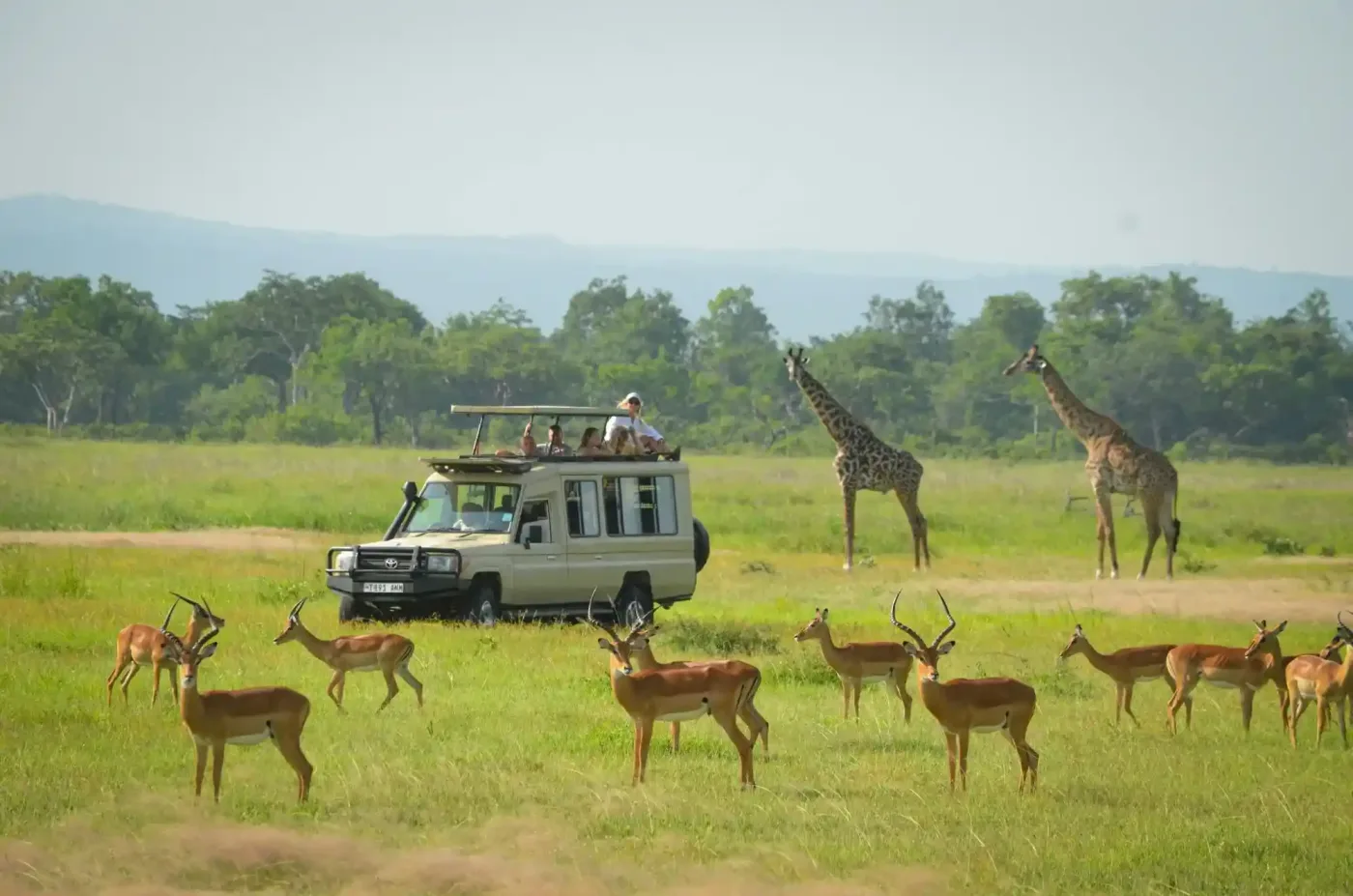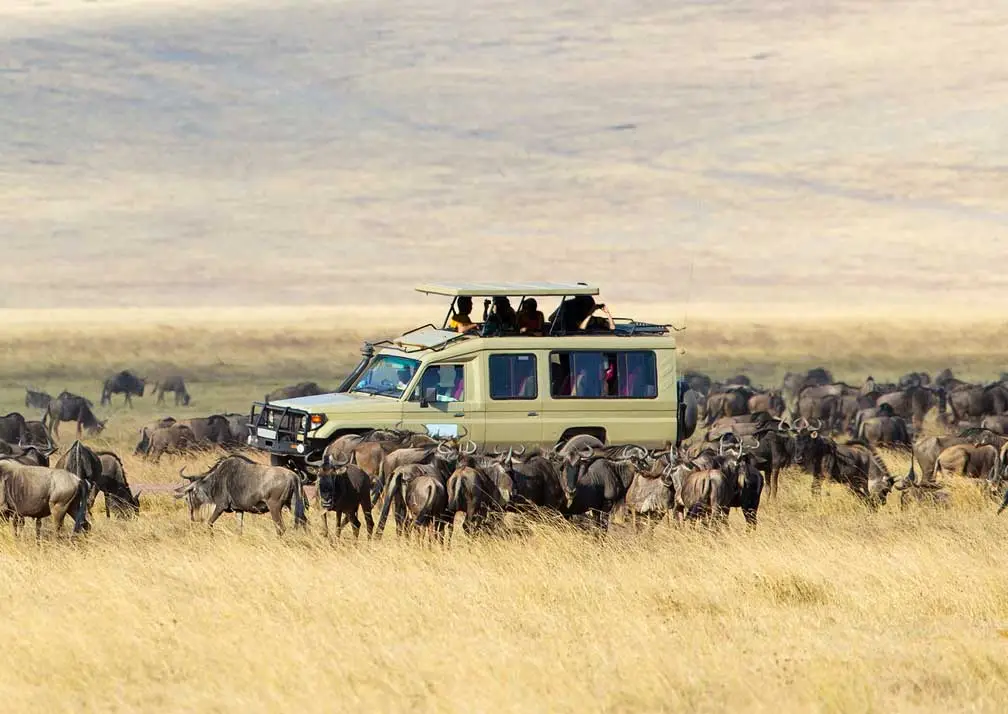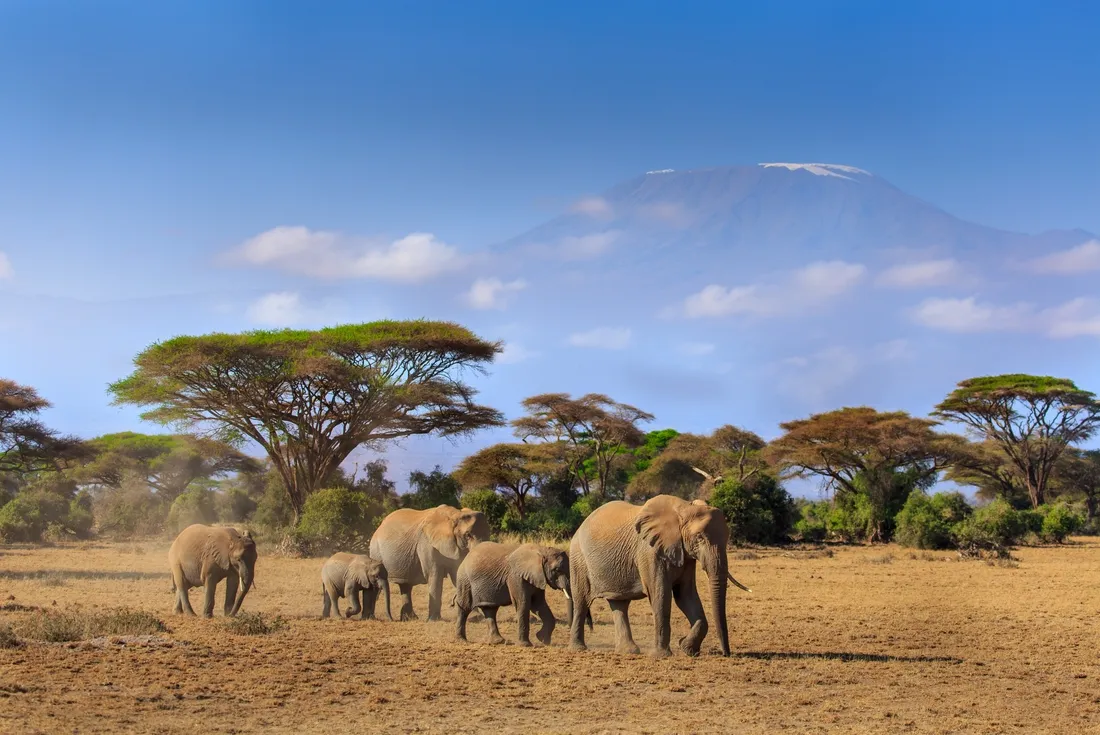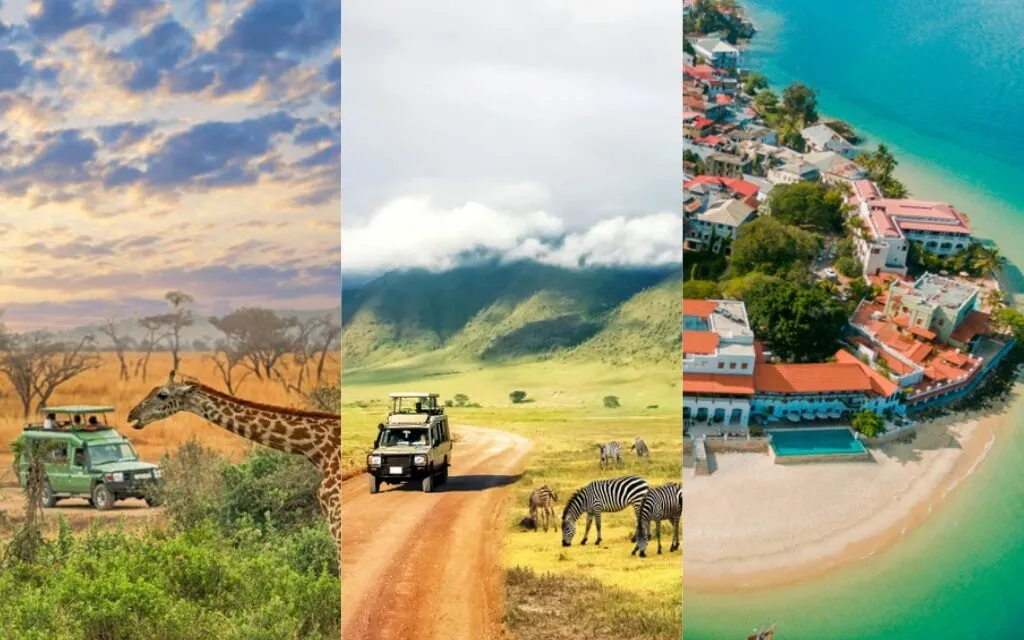Top 10 Animals to Spot in Serengeti
The Serengeti is world-famous for its incredible wildlife diversity, offering travelers the chance to witness Africa’s most iconic animals in their natural habitat. From the Big Five to unique species found only in East Africa, every game drive brings unforgettable encounters. Early mornings and late afternoons are the best times to see animals when they’re most active, while guided safaris ensure you don’t miss rare sightings. Here are the top 10 animals you’ll want to keep an eye out for: lions, elephants, leopards, buffalo, rhinos, giraffes, zebras, wildebeest, cheetahs, and hippos. Each brings its own excitement to the adventure so keep your camera ready! Below is a curated list of the top 10 animals to spot on your Serengeti safari with Capable Africa Tours.
Discover Serengeti Wildlife
Top 10 Animals to Spot in Serengeti National Park
Serengeti National Park spans 14,750 km² of grasslands, woodlands, and rivers, hosting an incredible diversity of wildlife. Home to the Big Five and the Great Migration, it’s a bucket-list destination for safari enthusiasts. Below, Capable Africa Tours highlights the top 10 animals to spot, with tips on when and where to see them for an unforgettable safari experience.
1. Lion (Panthera leo)
Why Spot Them? Lions, the kings of the savannah, are Serengeti’s apex predators. With over 3,000 lions, the park offers prime viewing of prides hunting or lounging under acacia trees.
Best Time: Year-round, especially June–October when prey is concentrated near water sources.
Where to Spot: Seronera Valley, known as the “Lion Capital” for its large prides.
Fun Fact: Serengeti lions are studied extensively, with some prides tracked for over 50 years.
2. Elephant (Loxodonta africana)
Why Spot Them? Serengeti’s 5,000+ elephants roam in herds, offering majestic sightings as they traverse grasslands or bathe in rivers.
Best Time: Dry season (June–October) for clear sightings near rivers.
Where to Spot: Northern Serengeti near the Mara River.
Fun Fact: Elephants consume up to 300 kg of vegetation daily, shaping the park’s ecosystem.
3. Wildebeest (Connochaetes taurinus)
Why Spot Them? The Great Migration’s 1.5 million wildebeests create one of nature’s greatest spectacles, especially during river crossings.
Best Time: June–August for river crossings, January–March for calving in southern Serengeti.
Where to Spot: Western Corridor (Grumeti River) or southern Ndutu plains.
Fun Fact: Over 500,000 wildebeest calves are born in a three-week period during calving season.
4. Cheetah (Acinonyx jubatus)
Why Spot Them? The world’s fastest land animal, cheetahs sprint up to 100 km/h. Serengeti’s open plains are perfect for spotting their hunts.
Best Time: Dry season for clear visibility.
Where to Spot: Eastern Serengeti’s Gol Kopjes for hunting grounds.
Fun Fact: Cheetahs rely on speed but rest for up to 30 minutes after a chase.
5. Leopard (Panthera pardus)
Why Spot Them? Elusive and solitary, leopards are a prized sighting, often spotted lounging in trees with their kills.
Best Time: Early mornings or late afternoons, year-round.
Where to Spot: Seronera Valley’s acacia trees.
Fun Fact: Leopards can drag prey three times their weight into trees.
6. Black Rhino (Diceros bicornis)
Why Spot Them? Critically endangered, Serengeti’s 200 rhinos are a rare treat, completing the Big Five checklist.
Best Time: Dry season near waterholes.
Where to Spot: Moru Kopjes, a rhino conservation area.
Fun Fact: Rhinos have poor eyesight but an acute sense of smell.
7. Zebra (Equus quagga)
Why Spot Them? Over 200,000 zebras join the Great Migration, their stripes creating stunning visuals against the savannah.
Best Time: June–October for migration, year-round for smaller herds.
Where to Spot: Western Corridor or Seronera.
Fun Fact: Each zebra’s stripe pattern is unique, like a fingerprint.
8. Giraffe (Giraffa camelopardalis)
Why Spot Them? Serengeti’s Maasai giraffes, with their distinctive star-like patches, tower over acacia trees, offering iconic photo opportunities.
Best Time: Year-round, especially in wooded areas.
Where to Spot: Central Serengeti’s acacia woodlands.
Fun Fact: Giraffes have 18-inch tongues to strip leaves from thorny acacias.
9. Spotted Hyena (Crocuta crocuta)
Why Spot Them? Known for their eerie “laugh,” hyenas are skilled hunters and scavengers, often seen in clans.
Best Time: Night drives or early mornings.
Where to Spot: Seronera Valley or near kills.
Fun Fact: Hyenas have one of the strongest bite forces in the animal kingdom.
10. Hippopotamus (Hippopotamus amphibius)
Why Spot Them? Hippos, lounging in rivers or mud pools, are surprisingly agile and territorial, adding drama to your safari.
Best Time: Dry season near water sources.
Where to Spot: Retina Hippo Pool in Seronera.
Fun Fact: Hippos can hold their breath for up to 5 minutes underwater.
Why Serengeti is a Must-Visit for Wildlife Lovers
Serengeti National Park is a UNESCO World Heritage Site, renowned for its vast ecosystems and unparalleled biodiversity. Spanning 14,750 km², it supports over 4 million animals, including 70 large mammal species and 500 bird species. The park’s varied landscapes—grasslands, kopjes, and rivers—create ideal habitats for the top 10 animals listed above. With Capable Africa Tours, you’ll explore these ecosystems with expert guides who know the best spots for sightings, ensuring a safari that’s both thrilling and educational.
Key Statistics
- Area: 14,750 km², roughly the size of Connecticut.
- Animal Population: Over 4 million, including 3,000 lions and 5,000 elephants.
- Great Migration: 1.5 million wildebeests and 200,000 zebras annually.
- Bird Species: Over 500, including ostriches and secretary birds.
- Big Five Presence: Lion, elephant, leopard, buffalo, and rare black rhino.
Best Time to Spot Animals in Serengeti
Timing your Serengeti safari is crucial for maximizing animal sightings. The dry season (June–October) is prime for game viewing as animals congregate around rivers and waterholes. The wet season (November–May) offers lush landscapes, fewer crowds, and excellent birdwatching, with January–March ideal for wildebeest calving. Capable Africa Tours customizes itineraries to align with your wildlife goals, whether it’s the Great Migration or rare rhino sightings.
Seasonal Breakdown
| Season | Months | Wildlife Highlights | Pros | Cons |
|---|---|---|---|---|
| Dry Season | June–October | Great Migration river crossings, Big Five sightings | Clear visibility, concentrated wildlife | Higher costs, more crowds |
| Wet Season | November–May | Wildebeest calving, birdwatching | Fewer crowds, lush scenery | Rainy trails, some animals disperse |
| Calving Season | January–March | 500,000+ wildebeest calves, predator action | Unique birthing events, budget-friendly | Some rain, less predictable sightings |
Tips for Spotting Animals in Serengeti
To make the most of your Serengeti safari, follow these practical tips from Capable Africa Tours:
- Use Binoculars: Essential for spotting leopards or cheetahs from a distance.
- Go Early or Late: Dawn and dusk game drives offer the best light and animal activity.
- Choose Expert Guides: Capable Africa Tours’ local guides know animal behaviors and prime locations.
- Stay Patient: Wildlife sightings require time, especially for elusive animals like rhinos.
- Pack Smart: Neutral-colored clothing, a good camera, and sunscreen are must-haves.
- Respect Wildlife: Maintain a safe distance and follow park rules to protect animals.
Serengeti Safari Costs and Planning
A Serengeti safari with Capable Africa Tours ranges from $200–$1,000 per person per day, depending on accommodation and safari type. Budget options include camping, while luxury lodges offer upscale amenities. Additional costs include park fees ($70–$100/day), visas ($50–$100), and tips ($10–$30/day). Contact Capable Africa Tours for a tailored quote that fits your budget and wildlife goals.
Cost Breakdown
- Budget Safari: $200–$350/day (camping, shared drives).
- Mid-Range Safari: $350–$600/day (lodges, private vehicles).
- Luxury Safari: $600–$1,500+/day (upscale lodges, private guides).
Book Your Serengeti Safari with Capable Africa Tours
Ready to witness Serengeti’s top 10 animals in their natural habitat? Capable Africa Tours crafts personalized safaris with expert guides, sustainable practices, and itineraries tailored to your interests. From the Great Migration to rare rhino sightings, we’ll make your adventure unforgettable.
- 95% Wildlife Sighting Success Rate
- Custom Itineraries for All Budgets
- Local Guides with Expert Knowledge
- Eco-Conscious and Community-Driven Tours
- Seamless Multi-Destination Adventures



